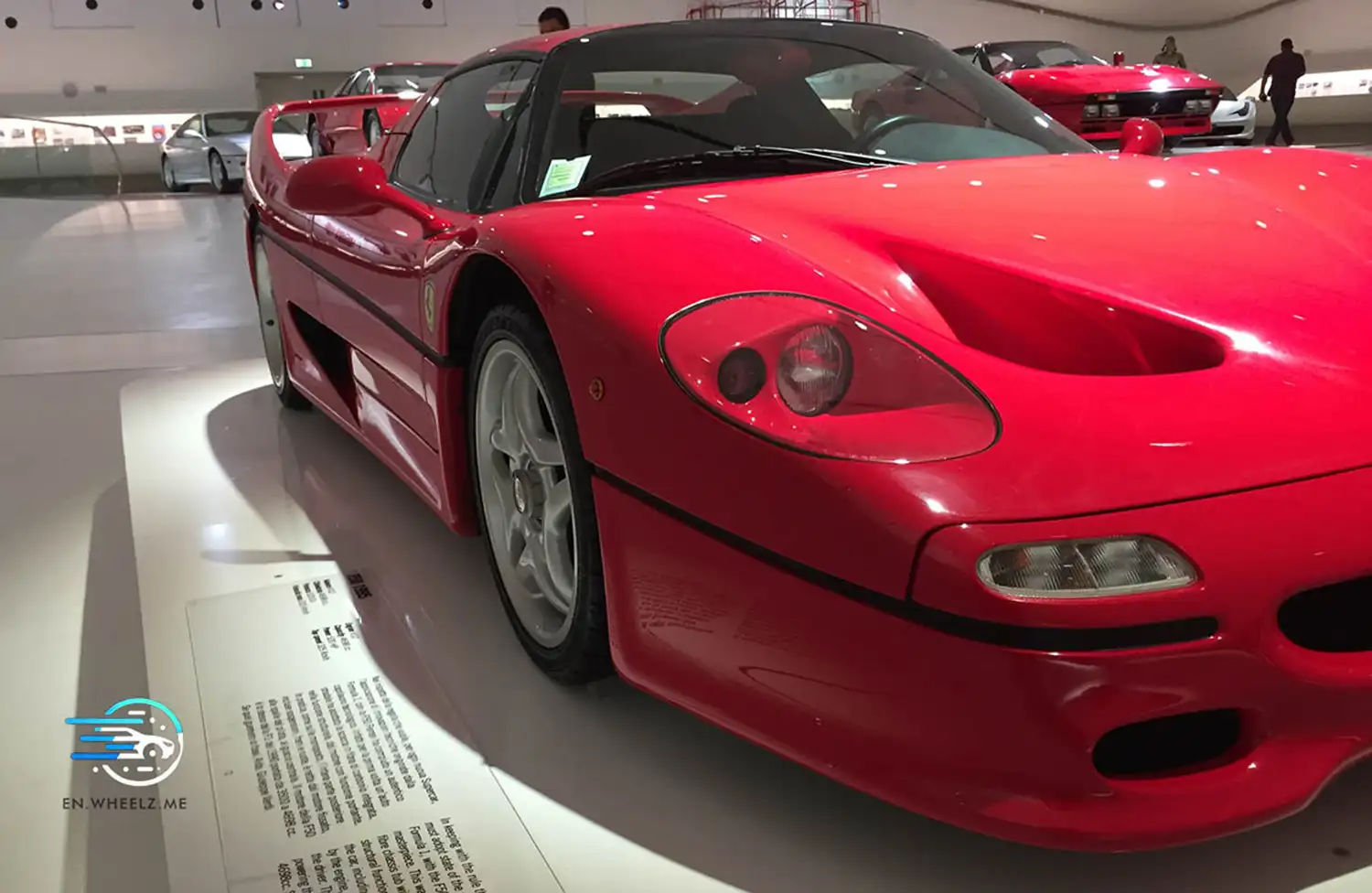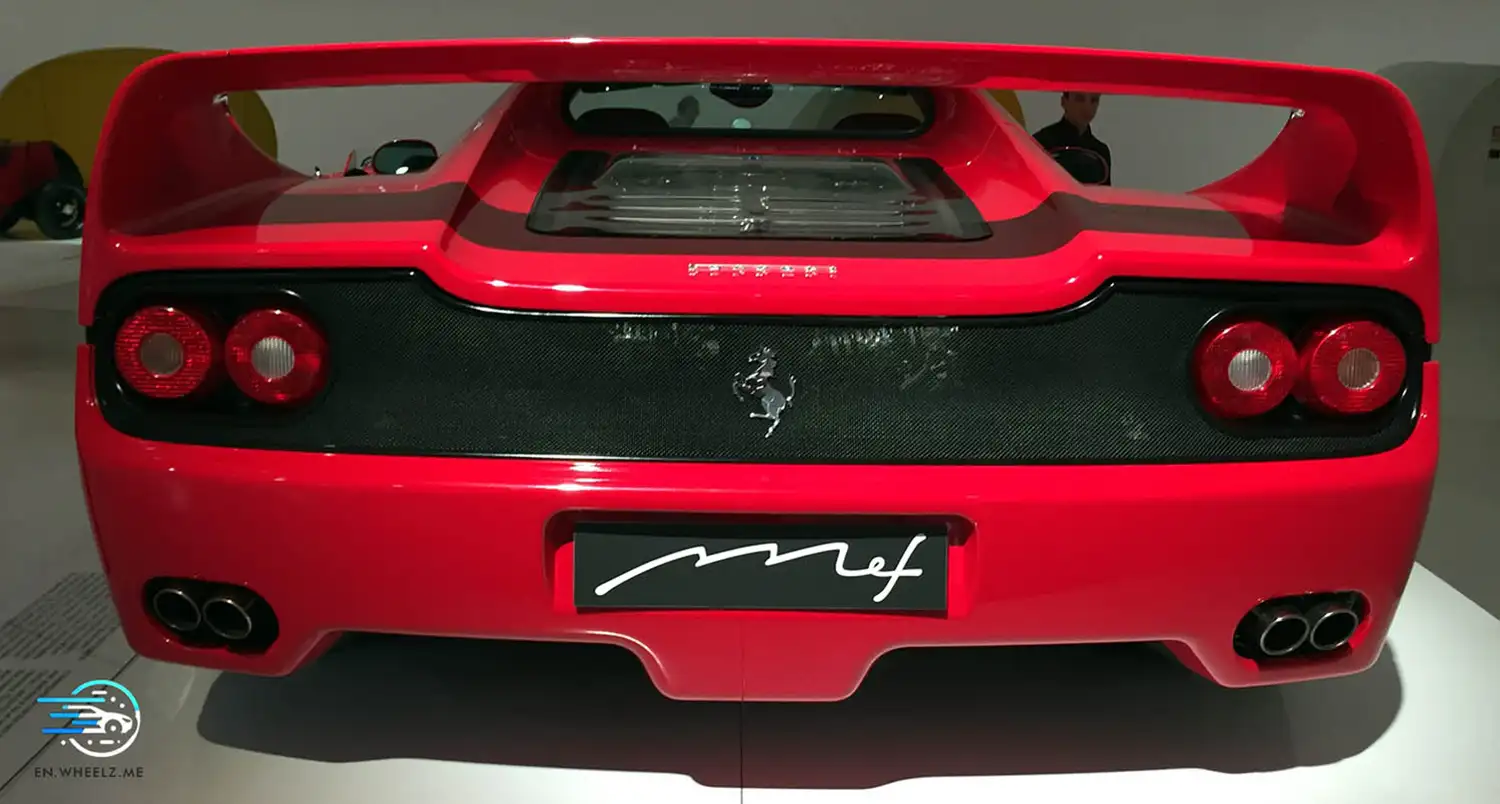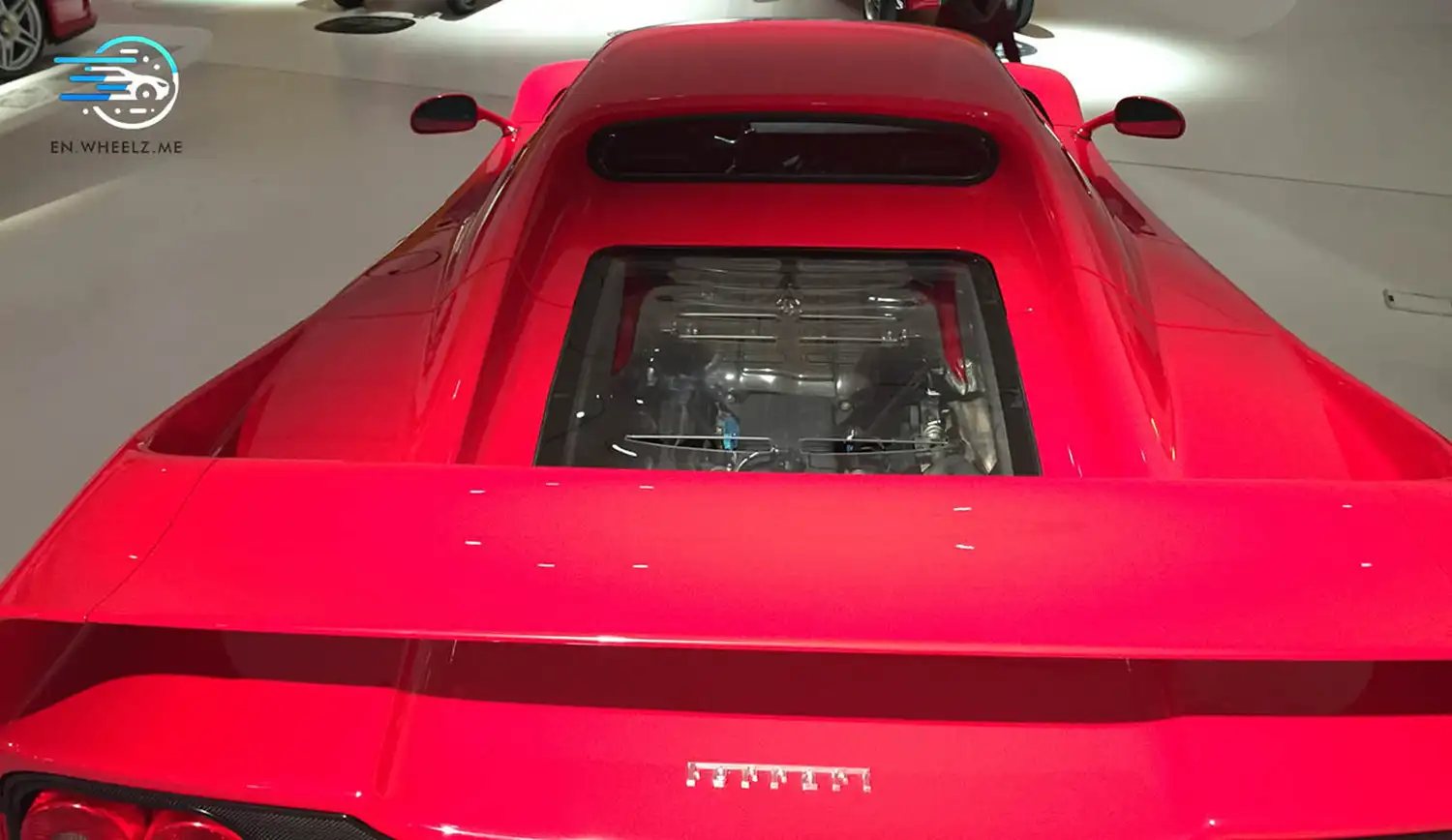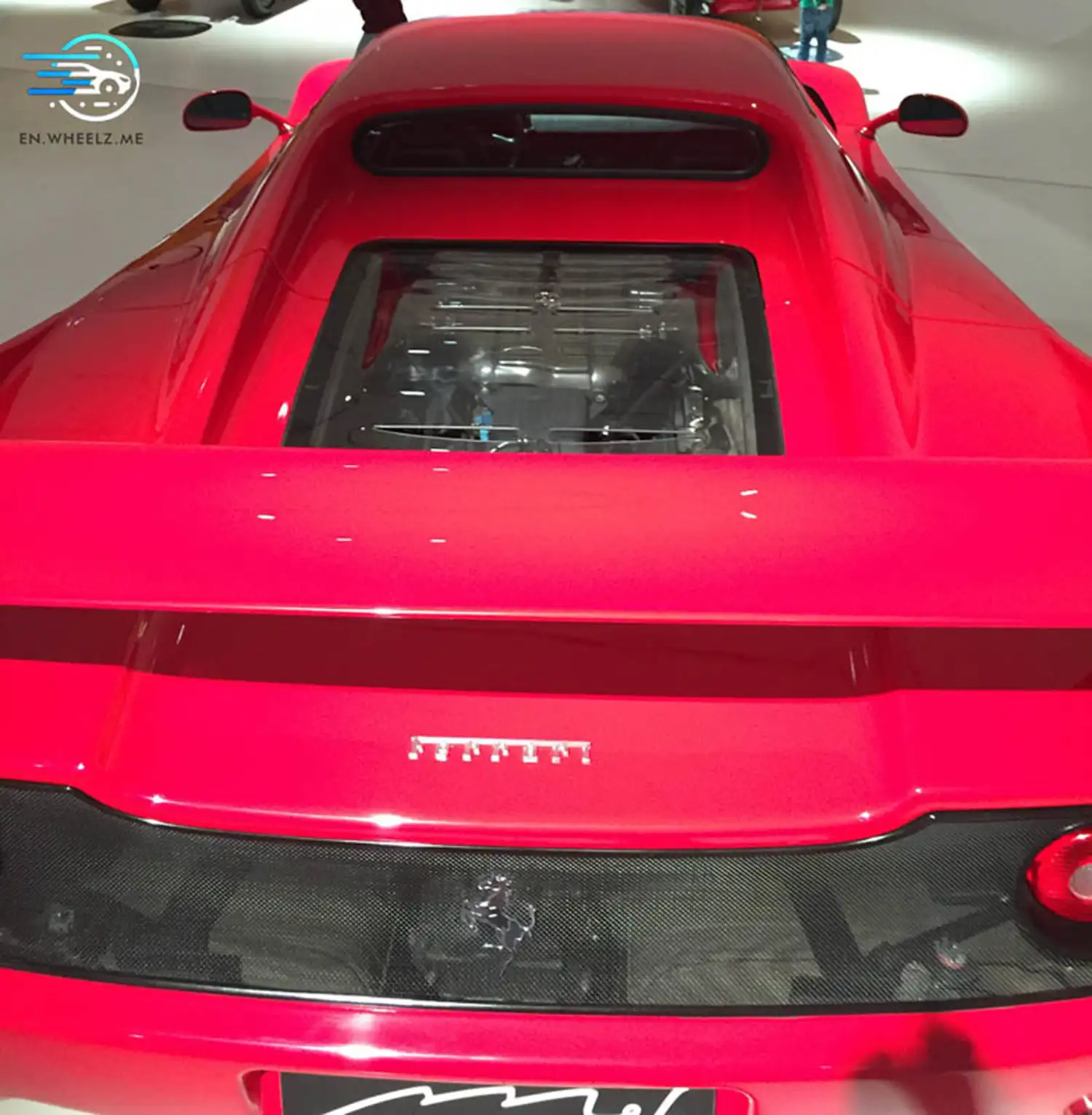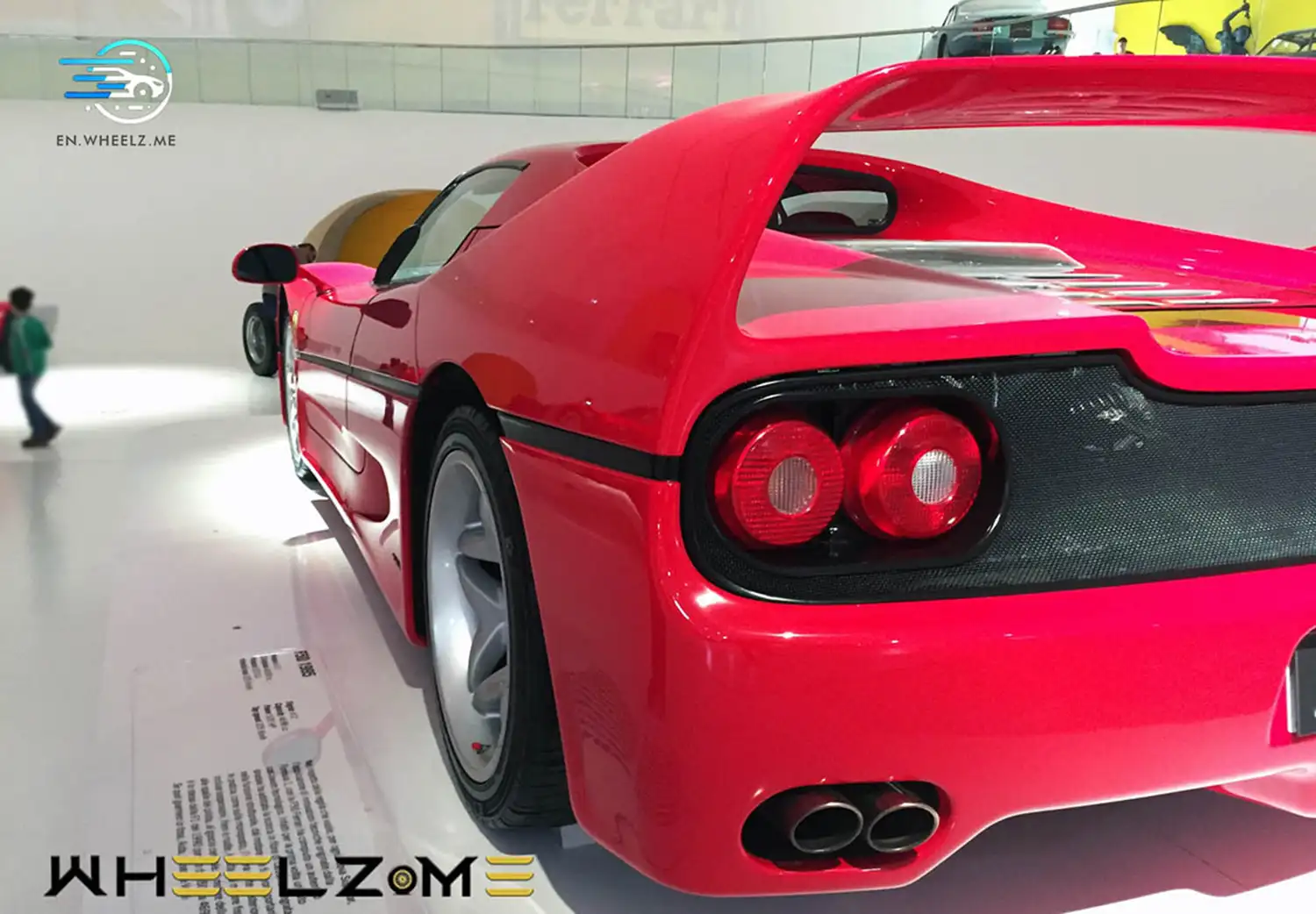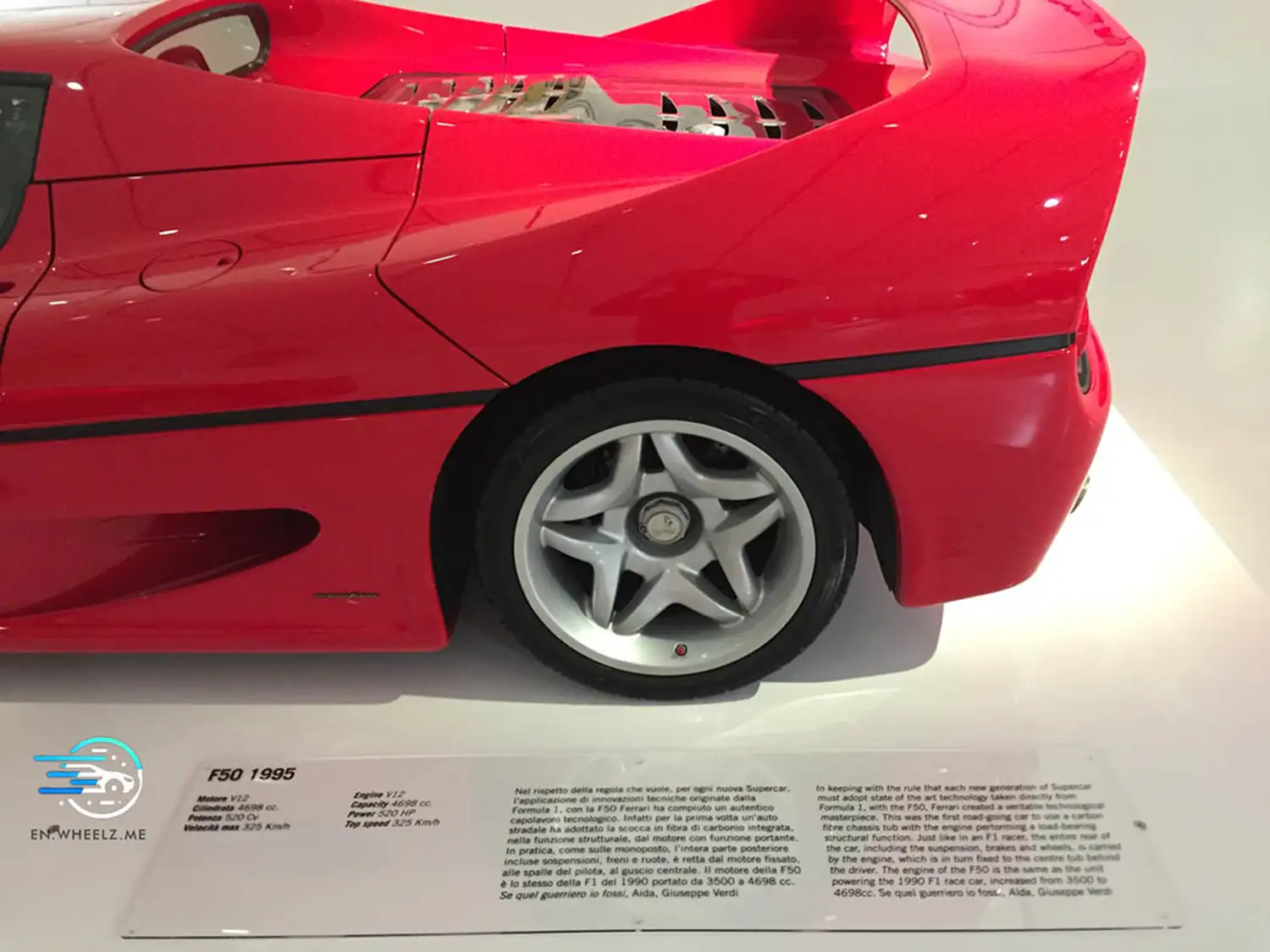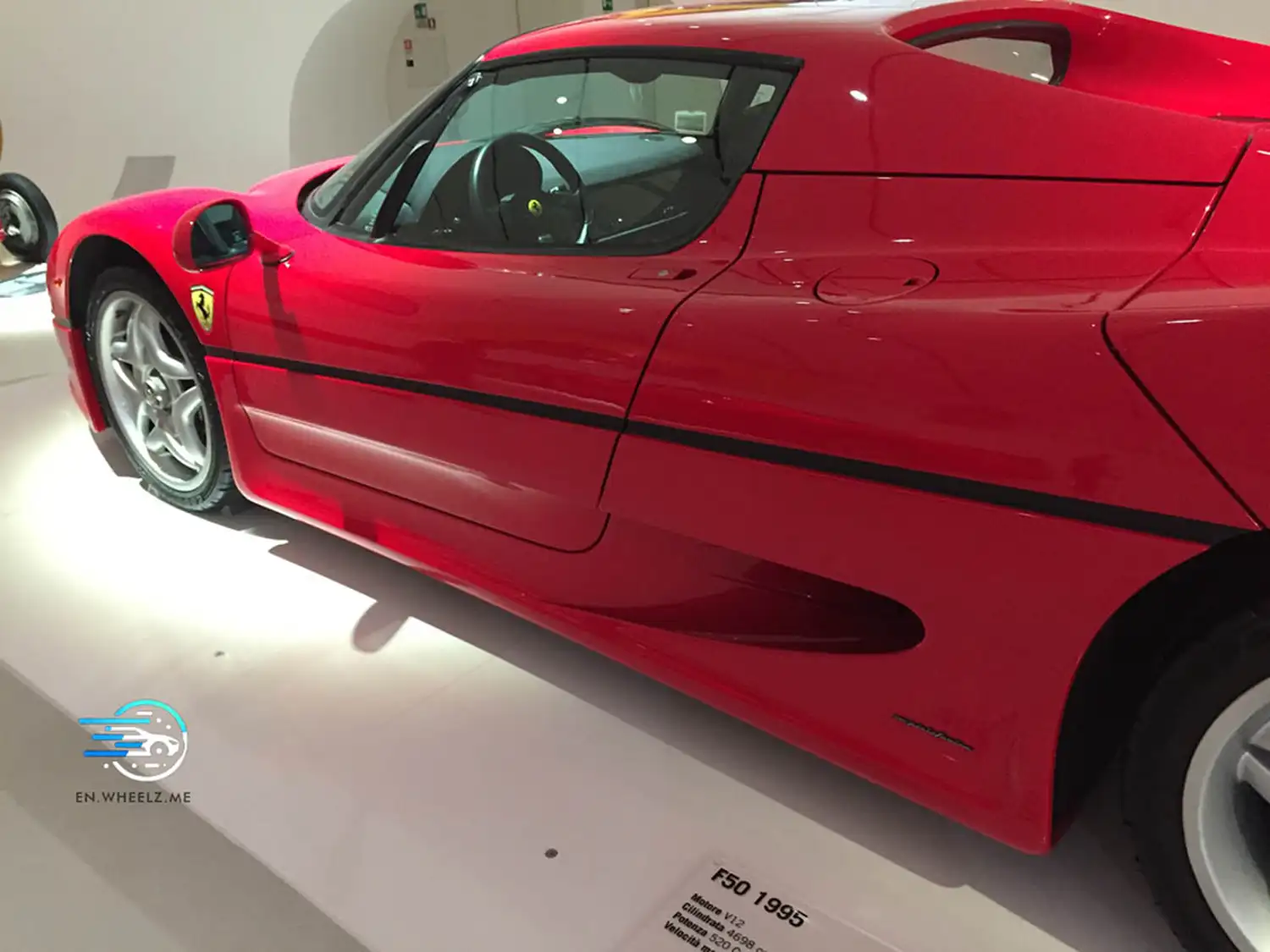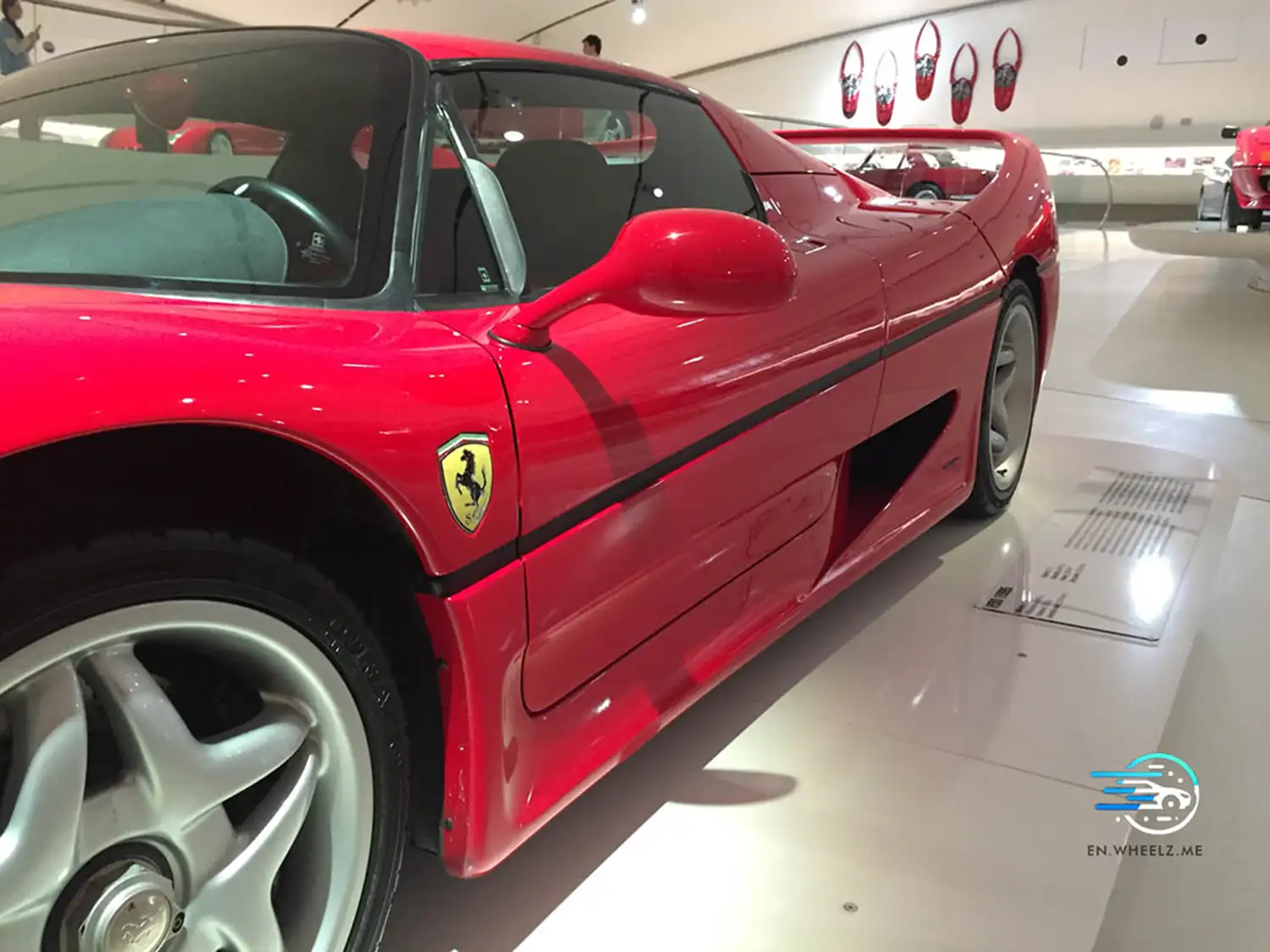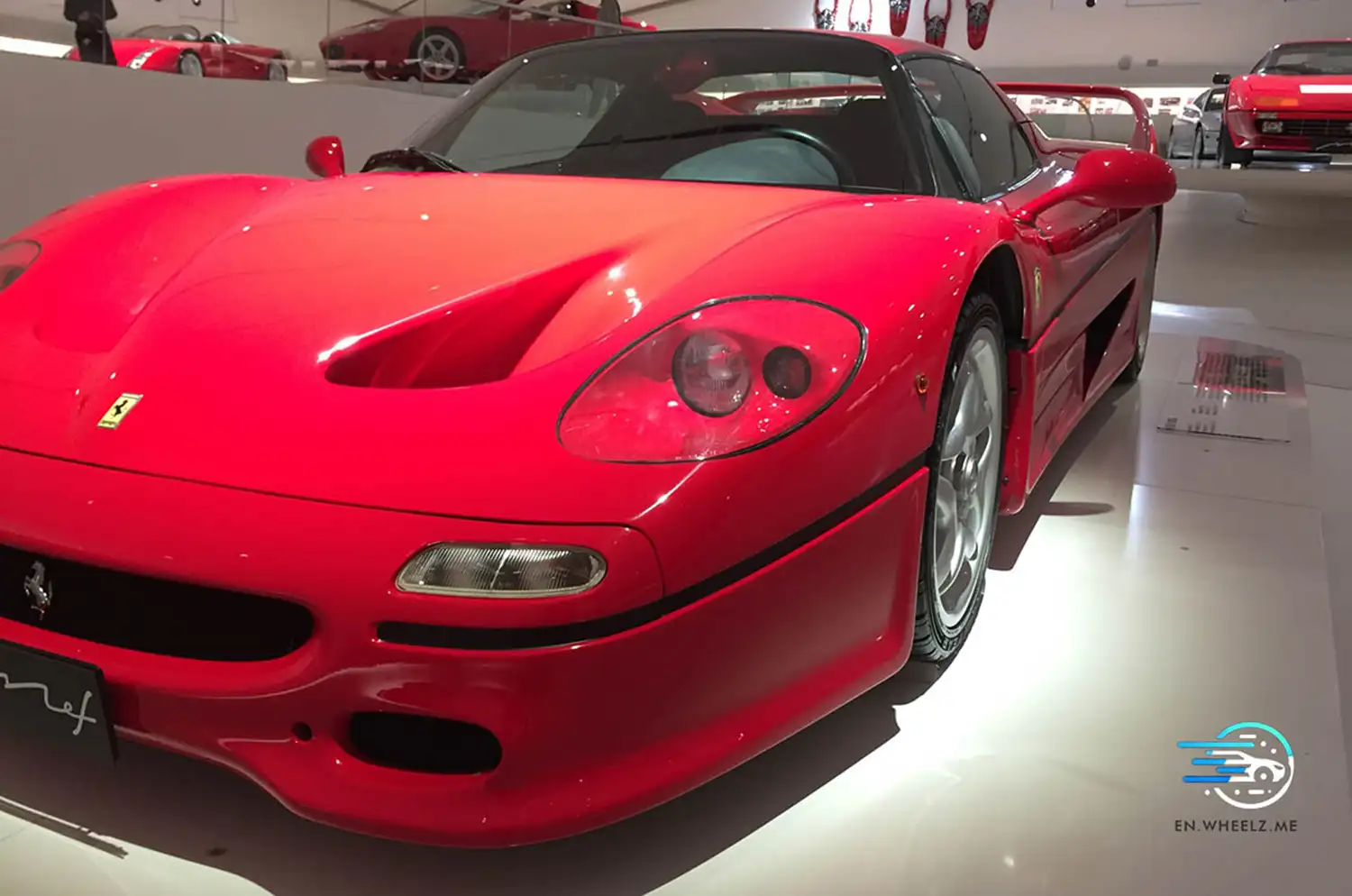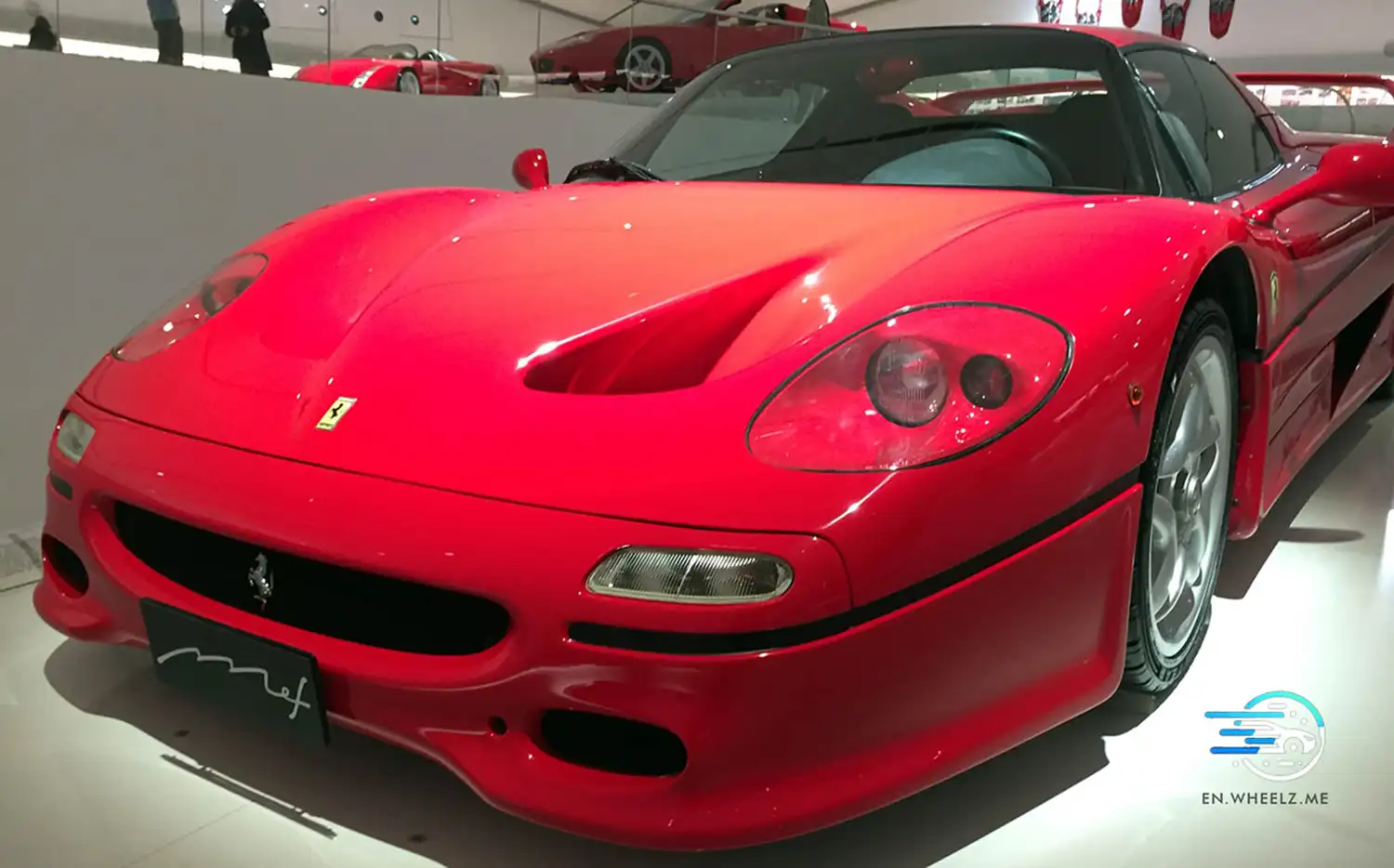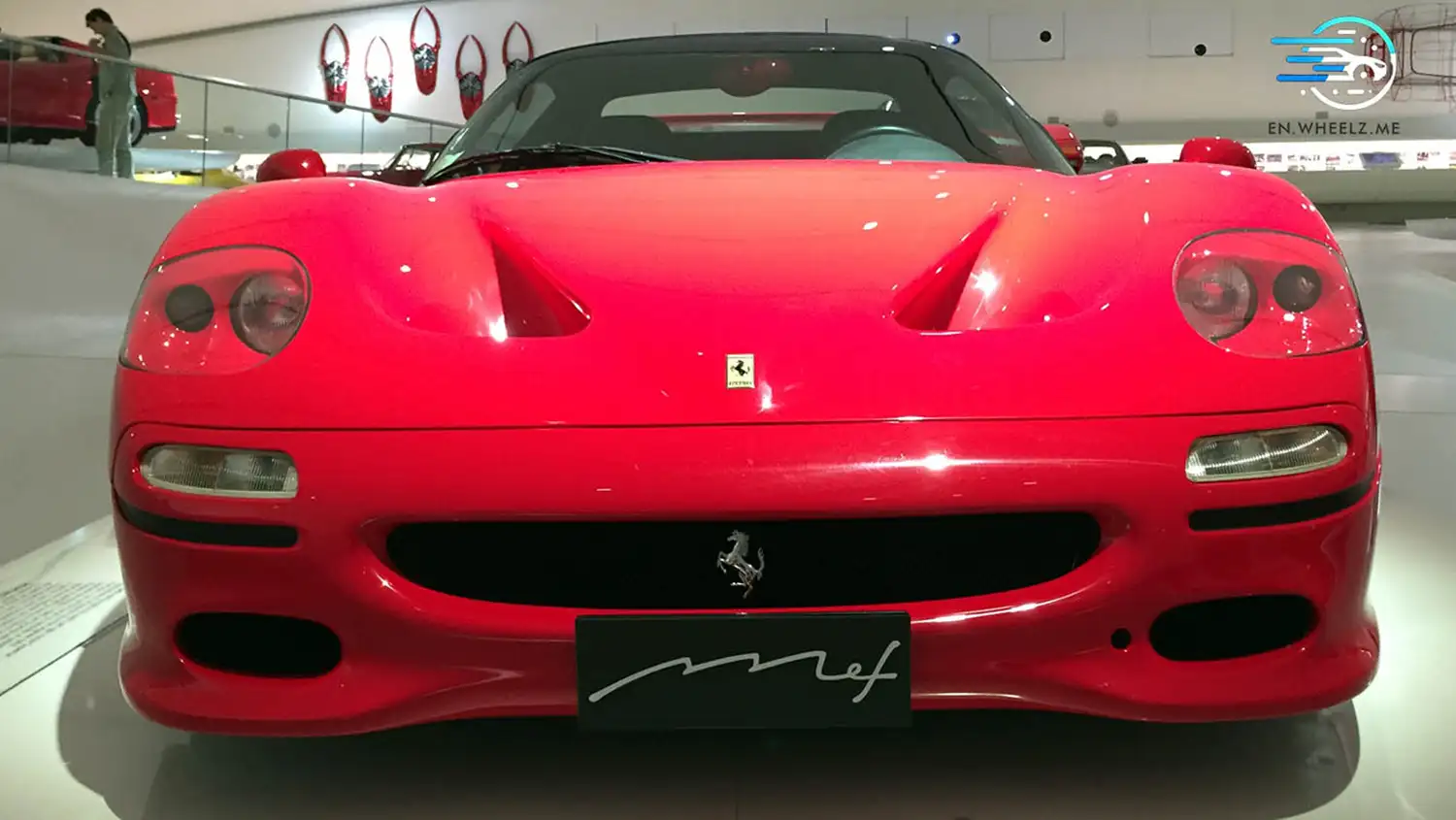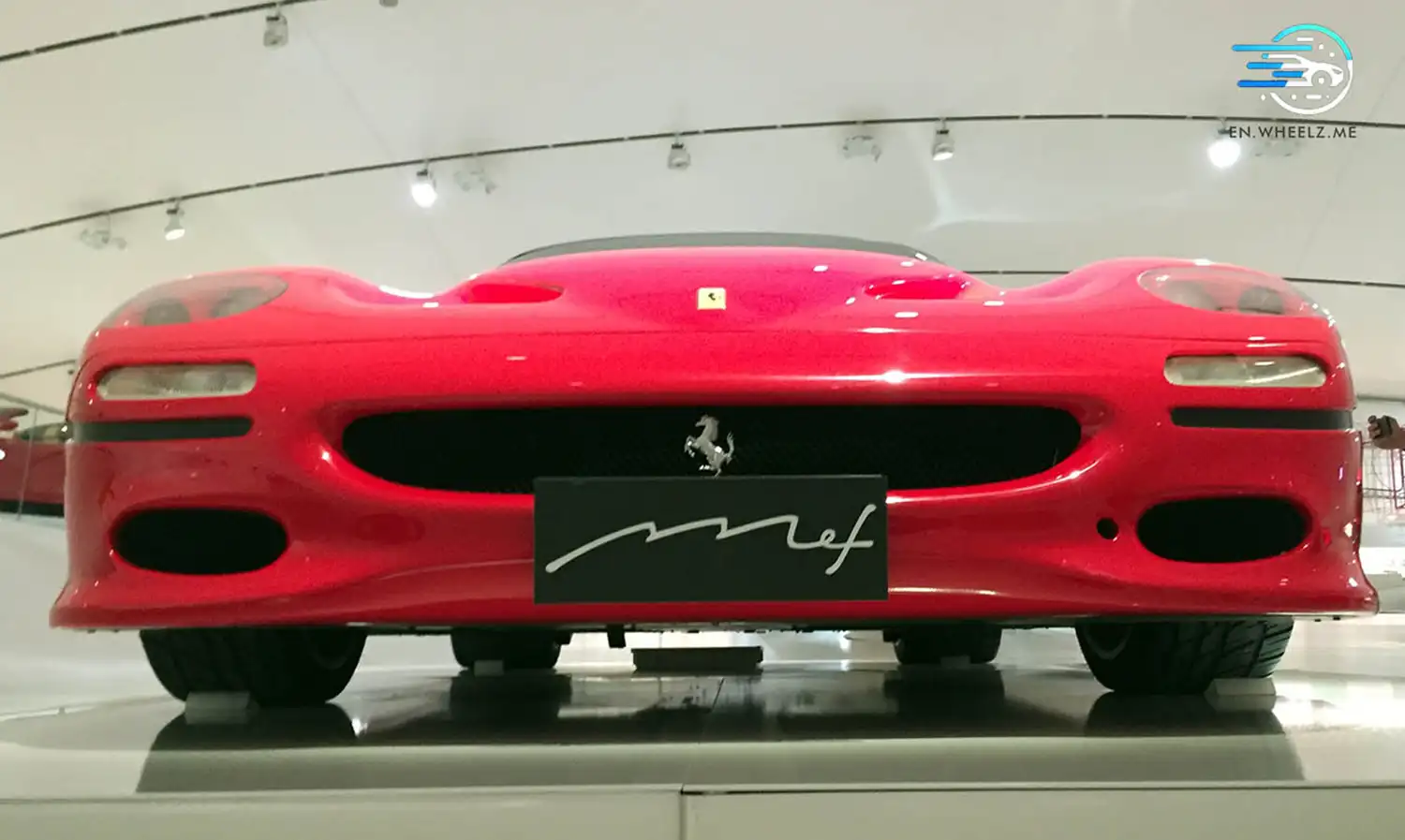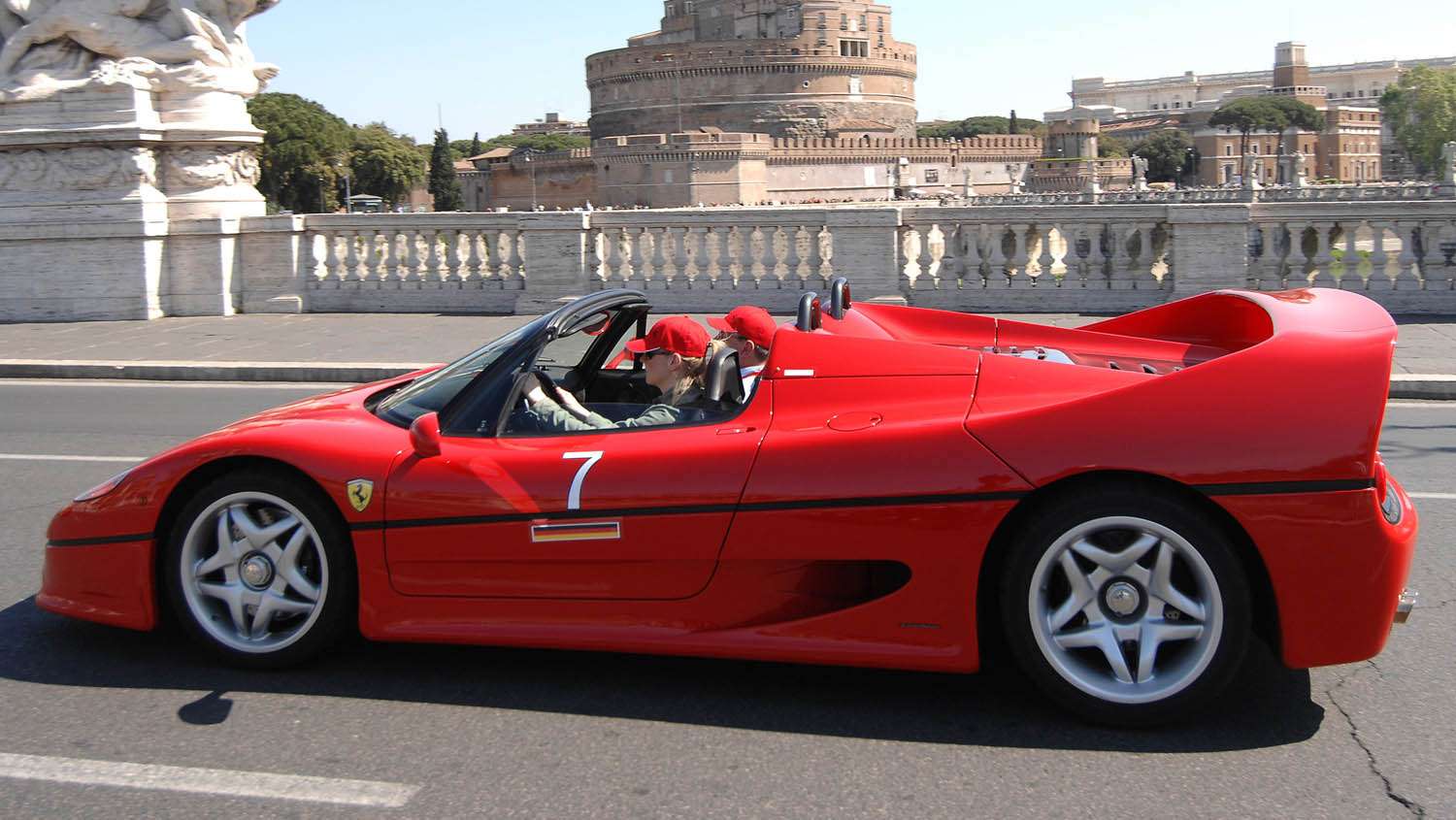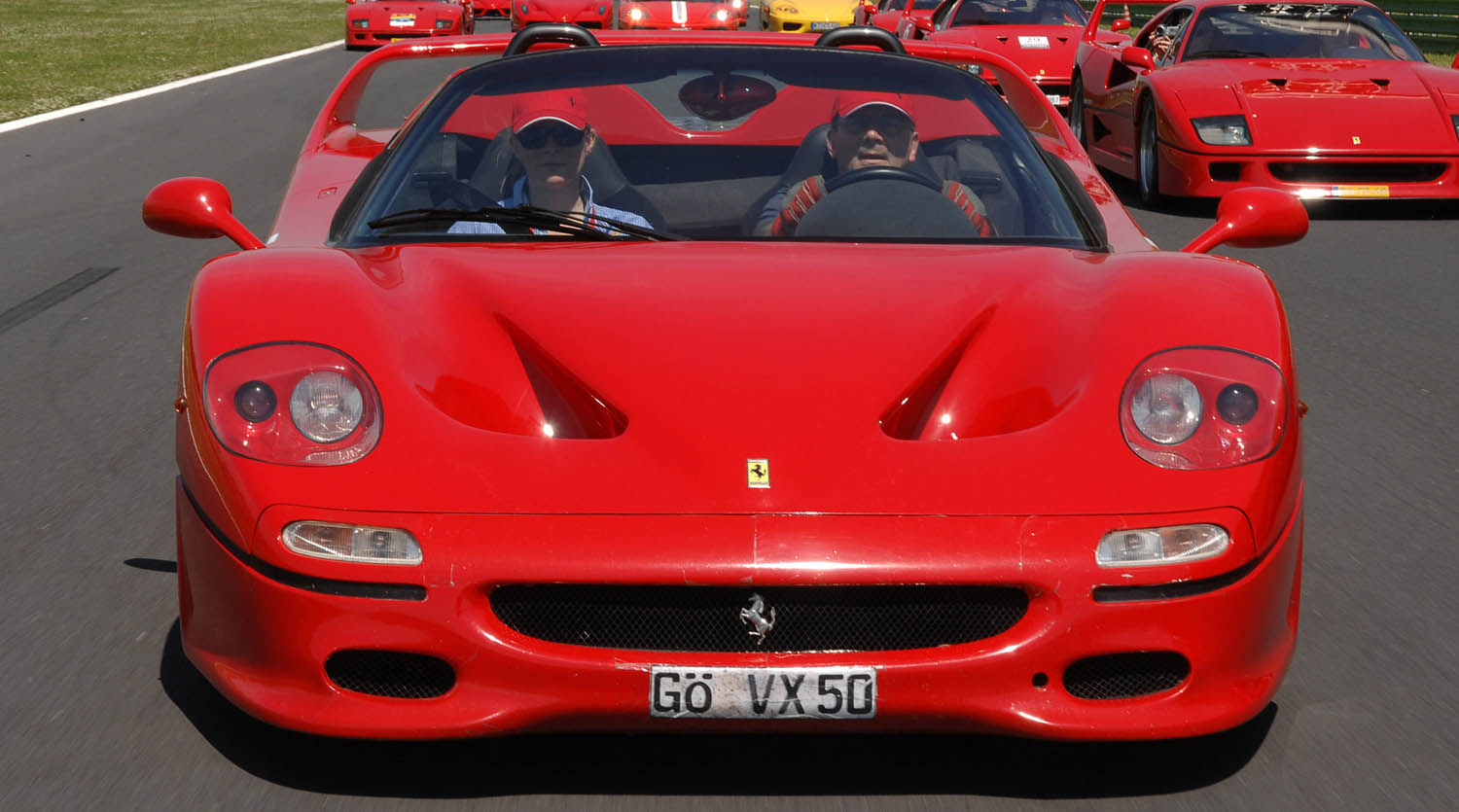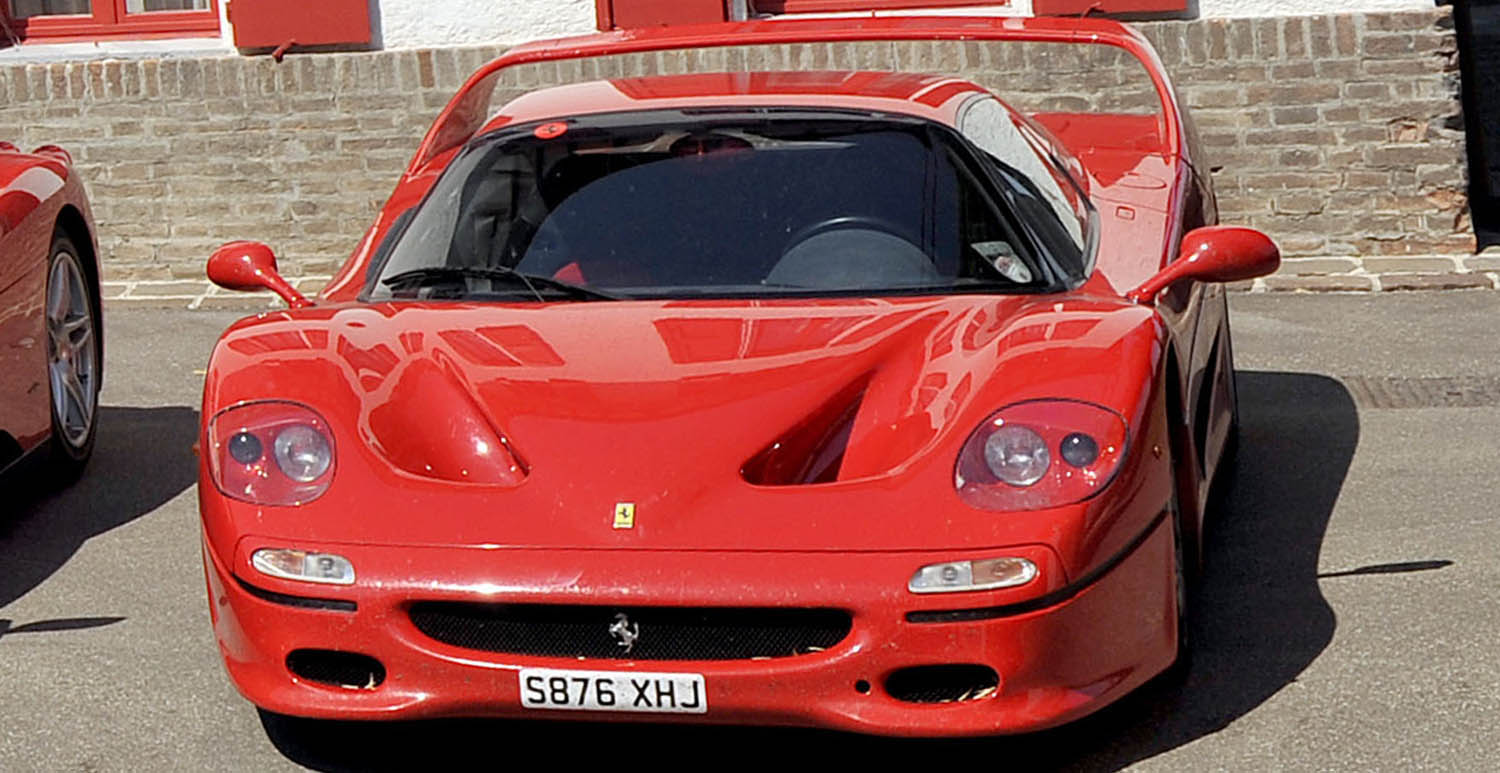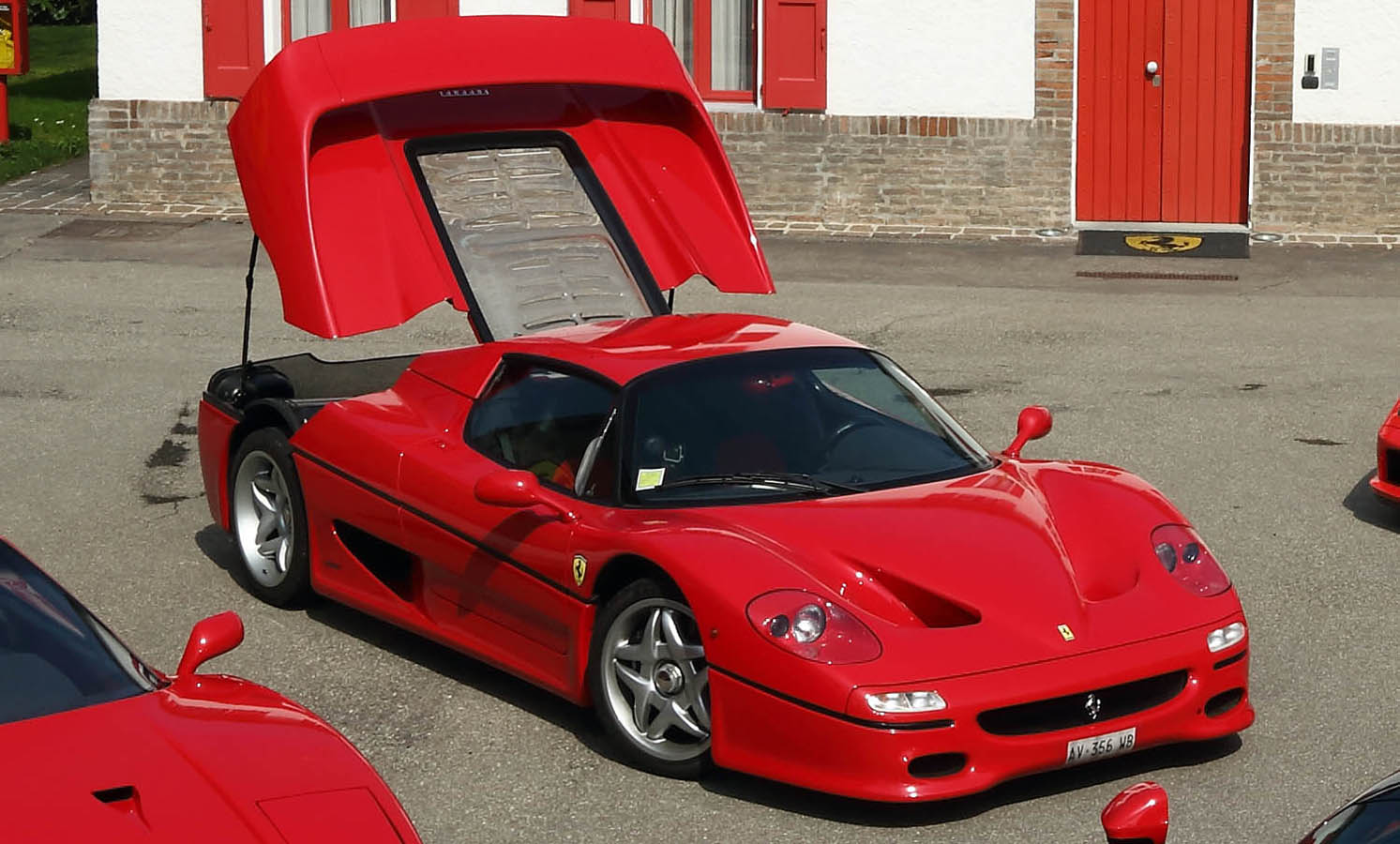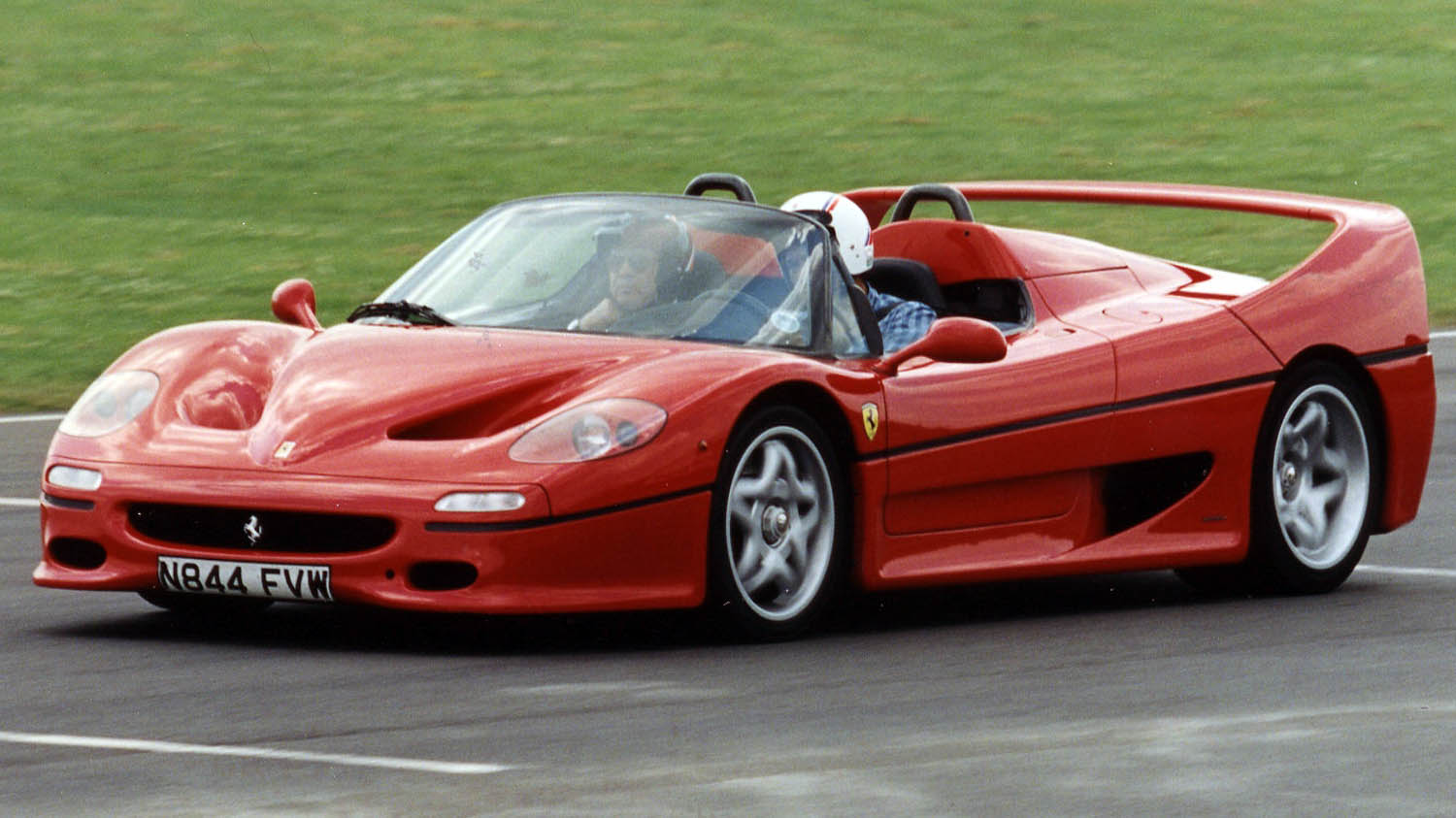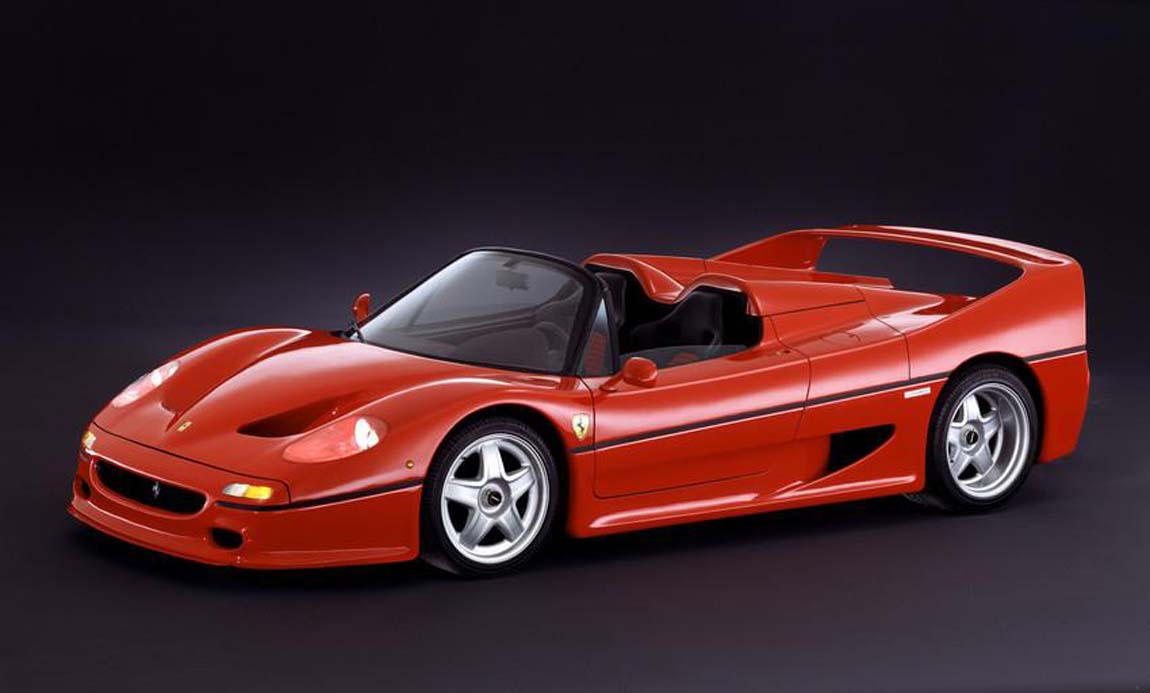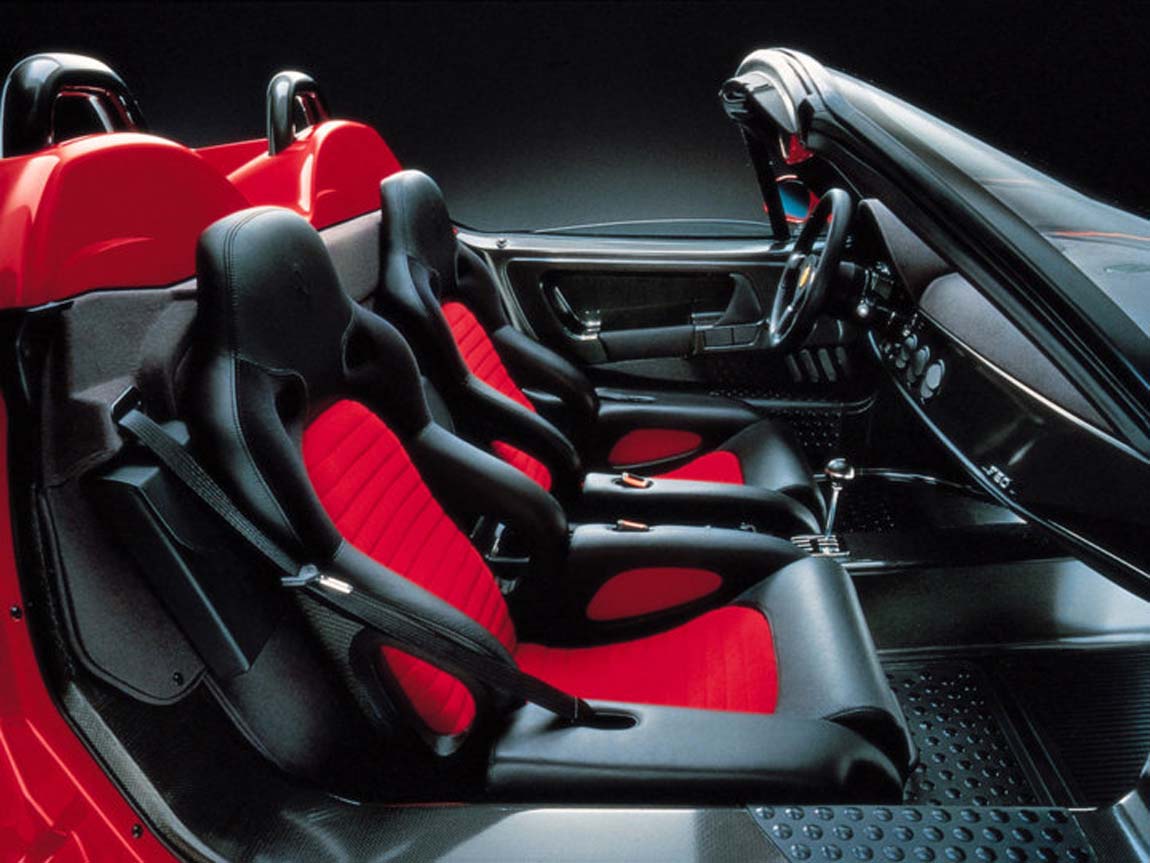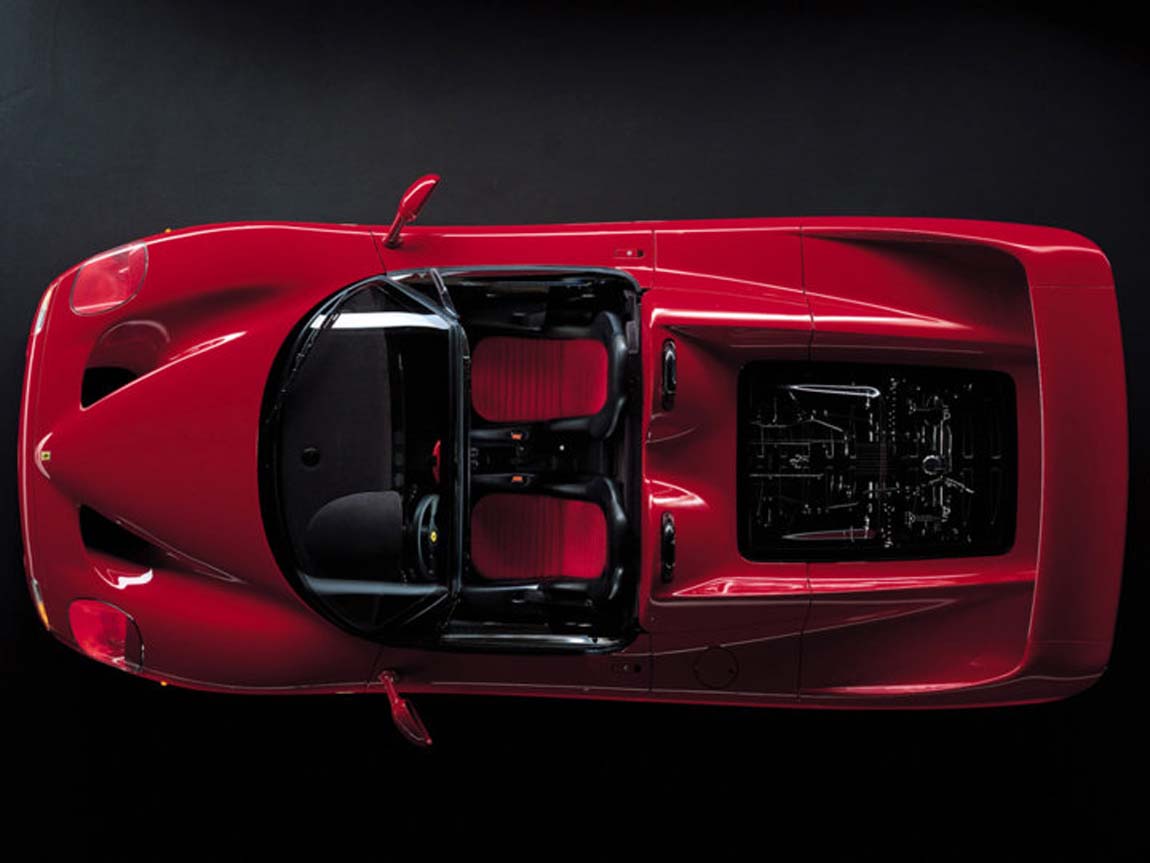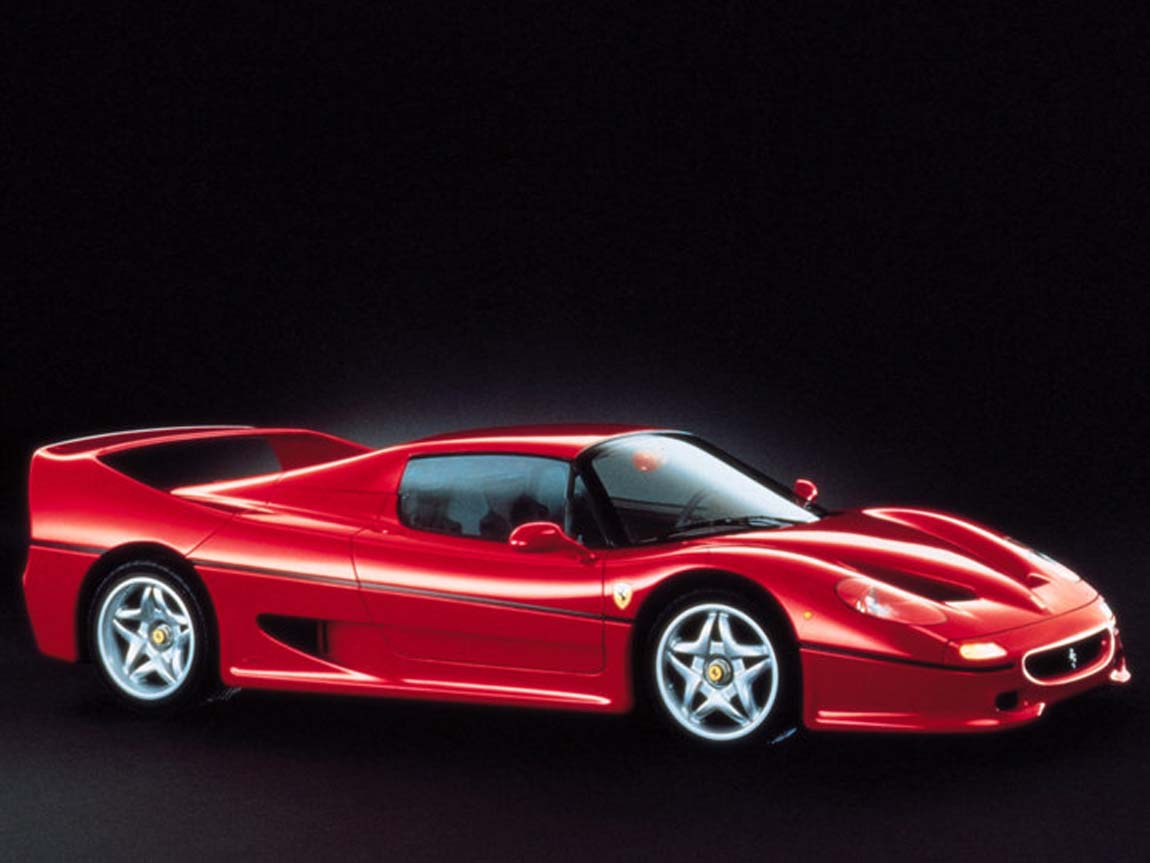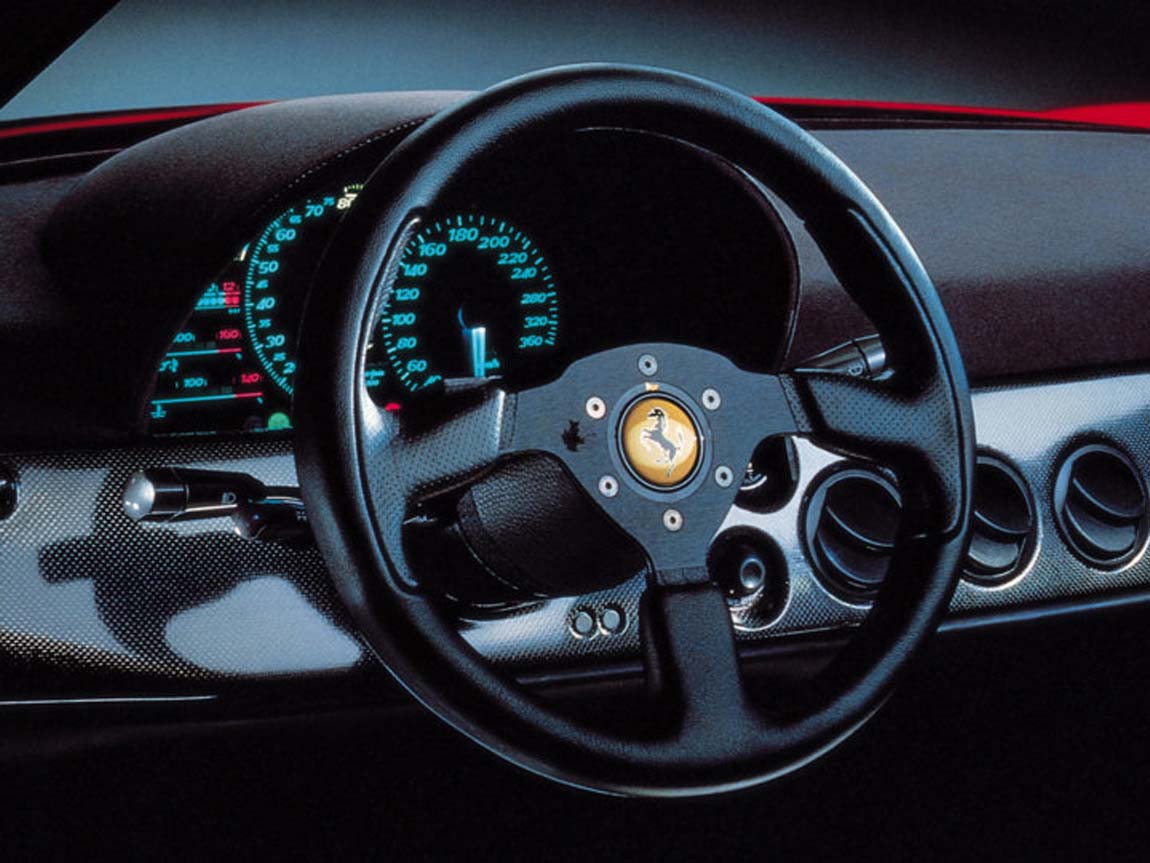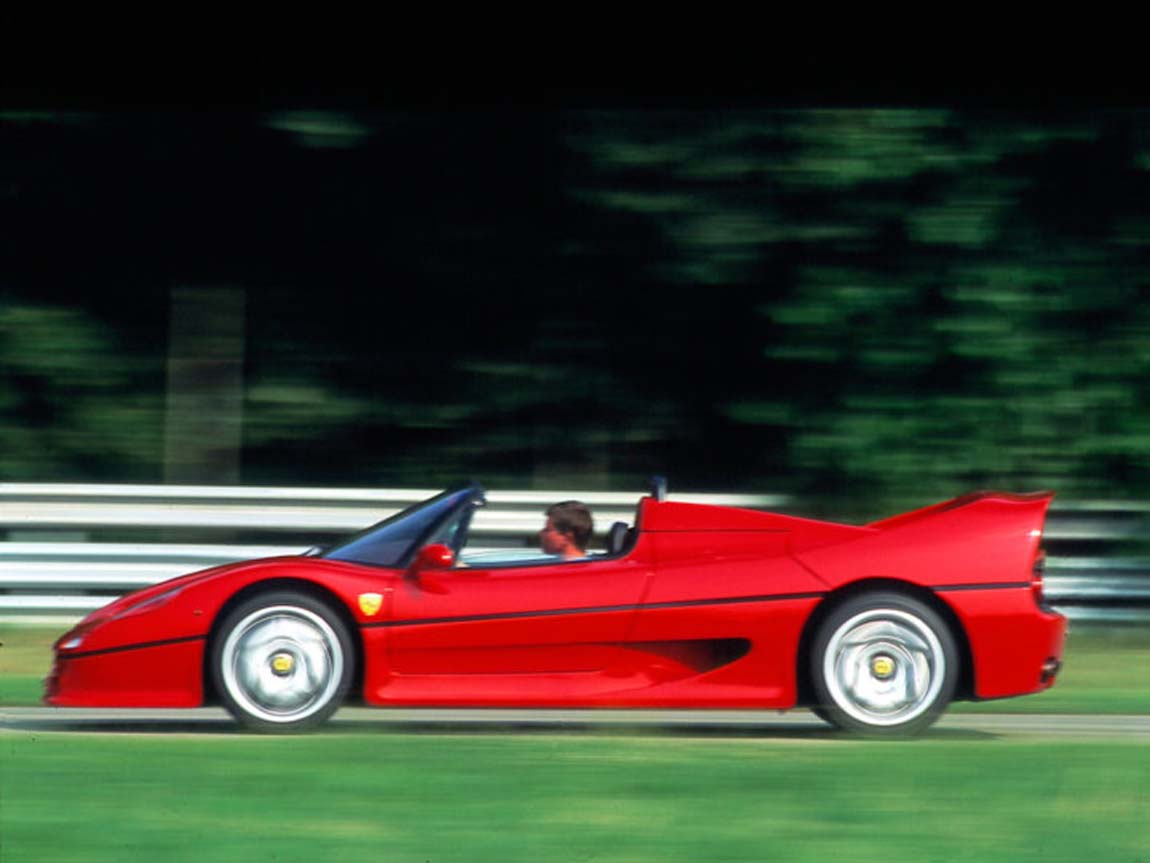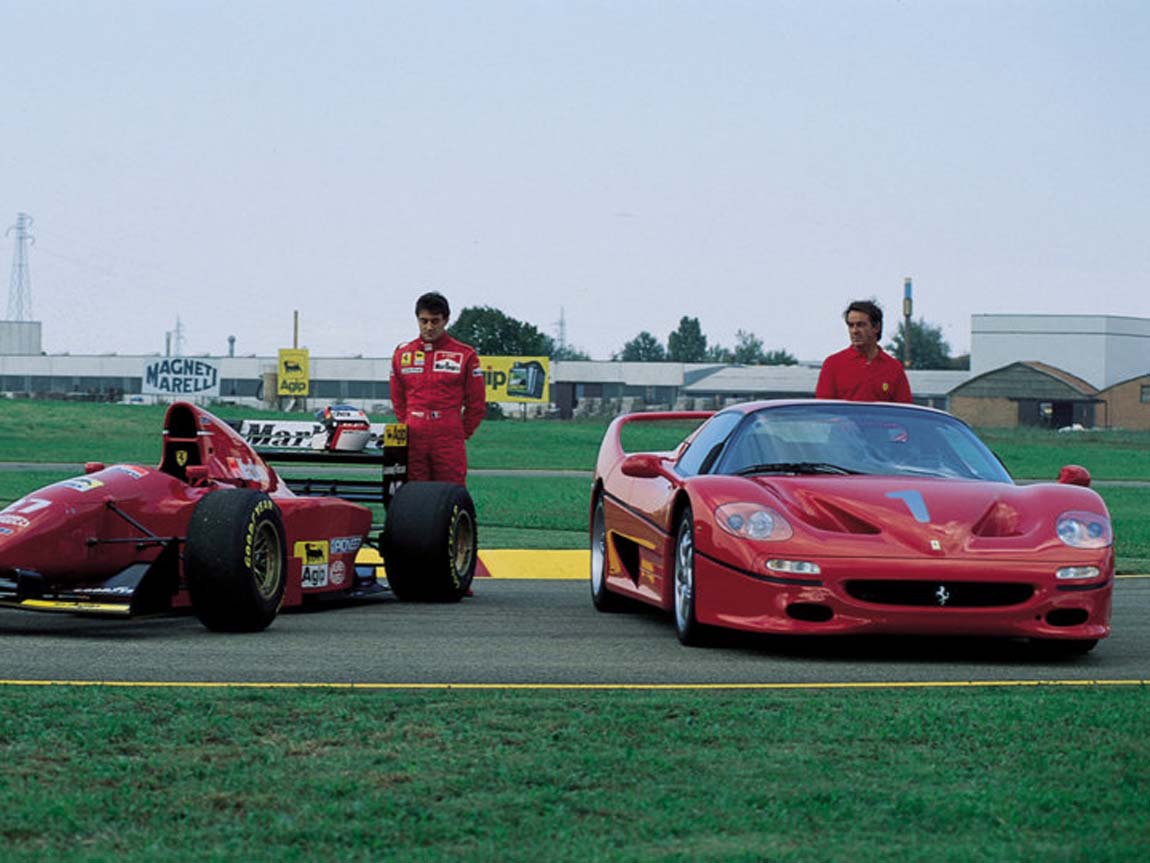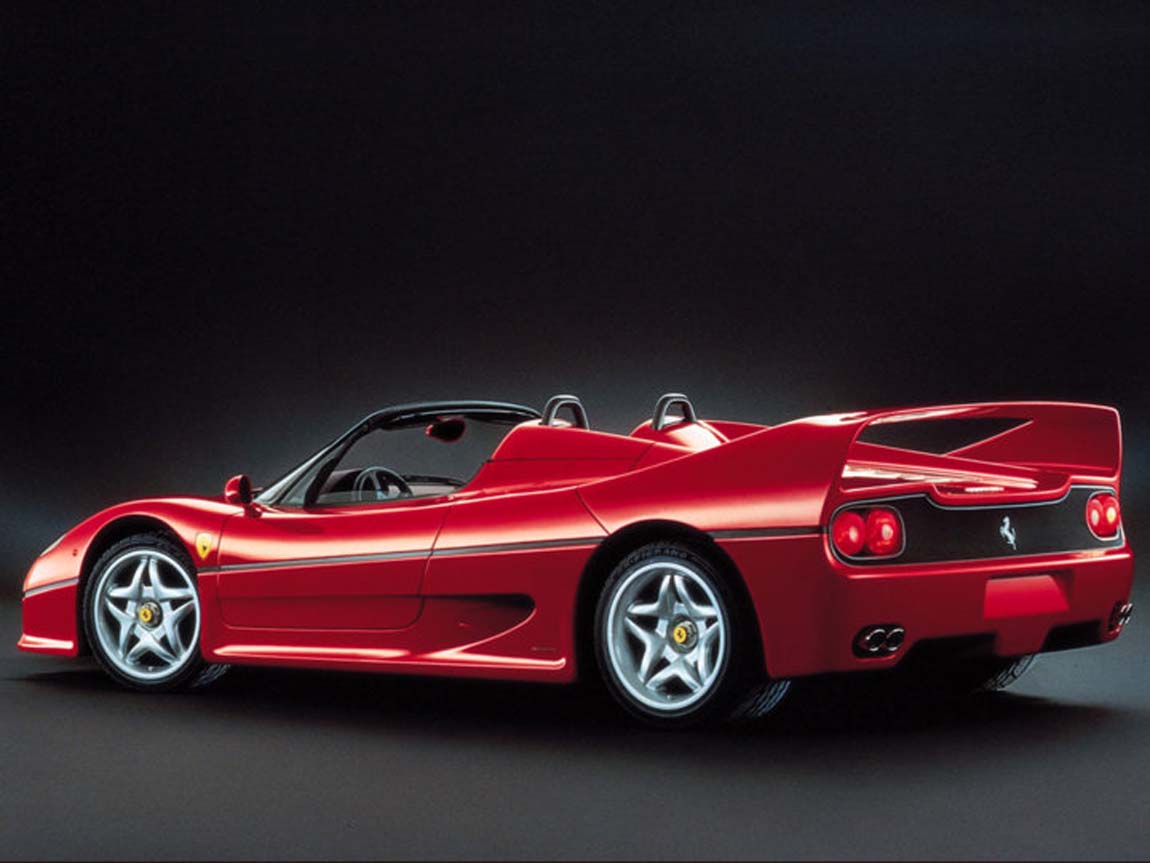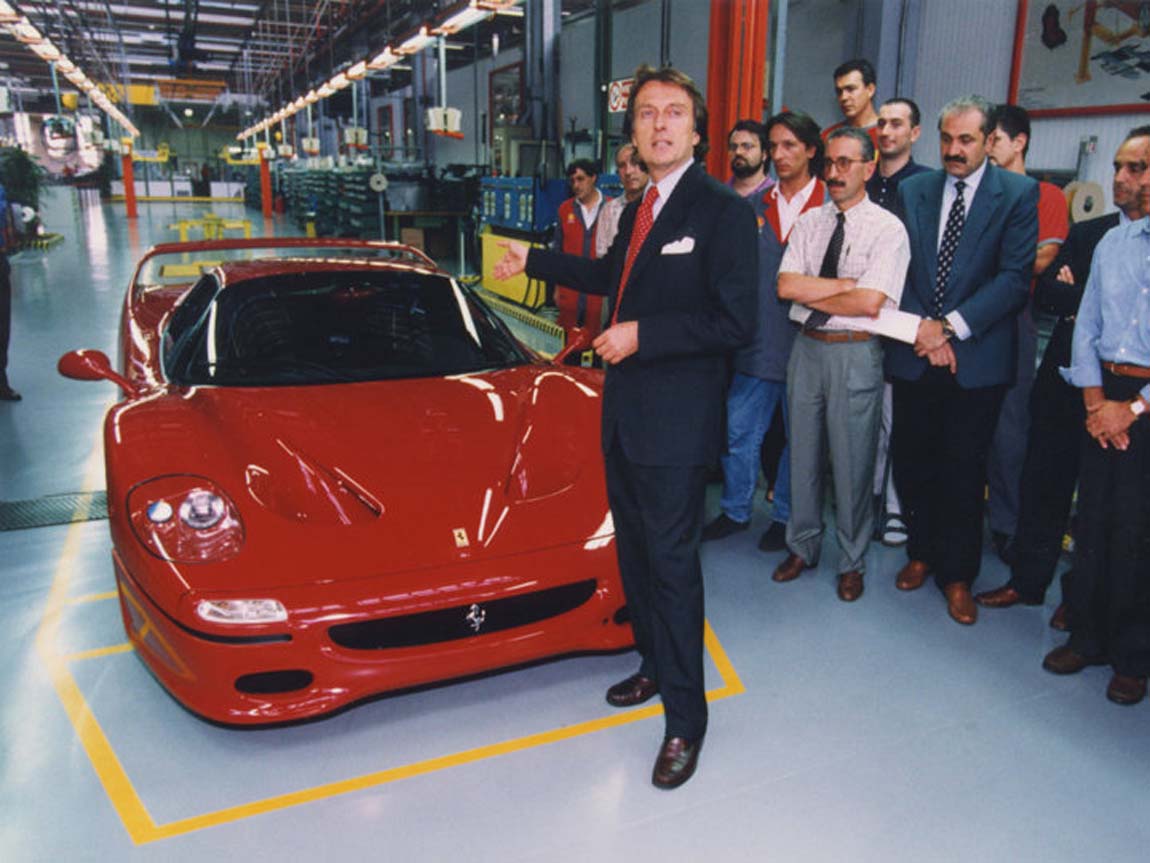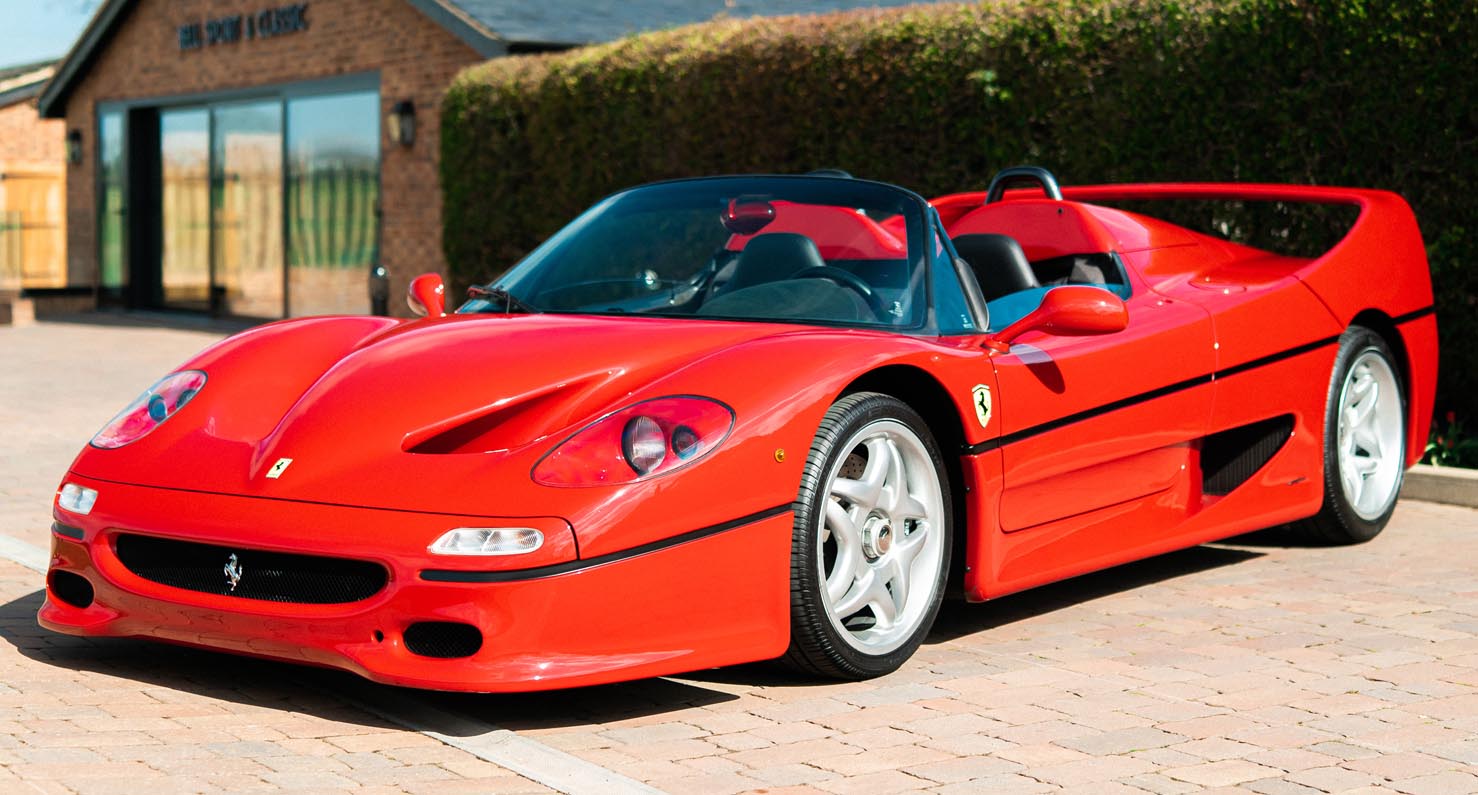
The Ferrari F50, the symbol of automotive excellence, performance, and passion. Introduced in 1995 to celebrate Ferrari’s 50th anniversary, the F50 was the successor to the iconic F40 and represented the pinnacle of automotive engineering and design.
Design and Engineering
Designed as a road-going version of Ferrari’s Formula One race car, the F50 boasts a lightweight carbon fiber monocoque chassis and bodywork, ensuring exceptional rigidity and aerodynamic efficiency. Its striking design, penned by Pininfarina, features aggressive lines, a low-slung profile, and a prominent rear wing, reflecting its racing heritage.
Powertrain
At the heart of the Ferrari F50 lies a naturally aspirated 4.7-liter V12 engine, derived directly from Ferrari’s Formula One program. With a redline of 8,500 rpm, the engine produces a thrilling soundtrack and delivers exhilarating performance. Generating approximately 513 horsepower and 347 lb-ft of torque, the F50 accelerates from 0 to 60 mph in just 3.7 seconds, with a top speed exceeding 200 mph.
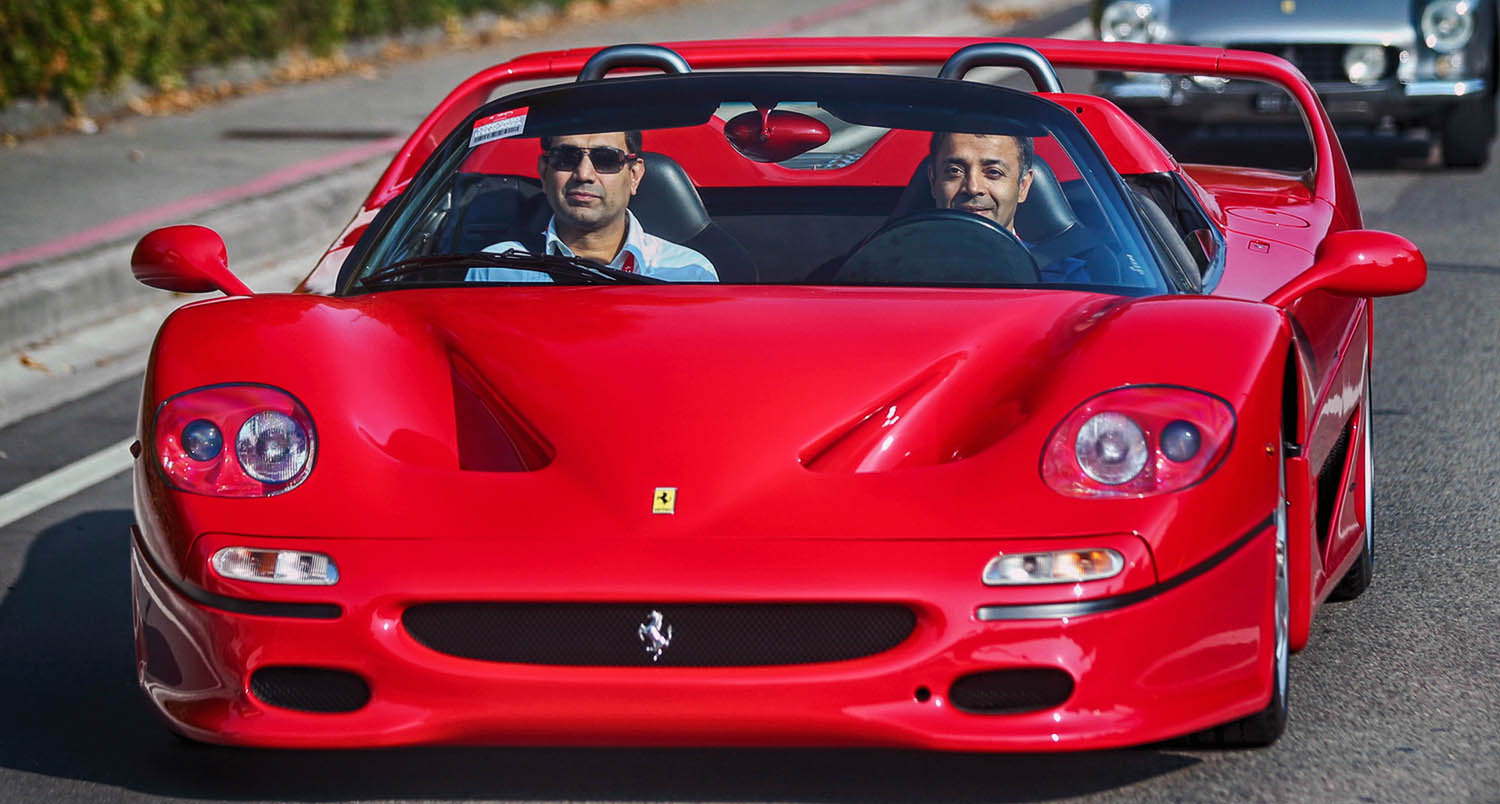
Performance
The Ferrari F50 is not just about straight-line speed; it’s also a masterful handler, thanks to its advanced suspension system, precise steering, and exceptional balance. Whether carving through mountain roads or attacking a racetrack, the F50 offers unparalleled driving dynamics and feedback, providing an immersive and thrilling experience behind the wheel.
Exclusivity
Production of the Ferrari F50 was limited to just 349 units, making it one of the rarest and most coveted Ferraris of its era. Each F50 was hand-built by Ferrari’s skilled artisans, ensuring the highest levels of craftsmanship and attention to detail. Its exclusivity, combined with its performance and pedigree, has made the F50 a highly sought-after collectible among enthusiasts and collectors worldwide.
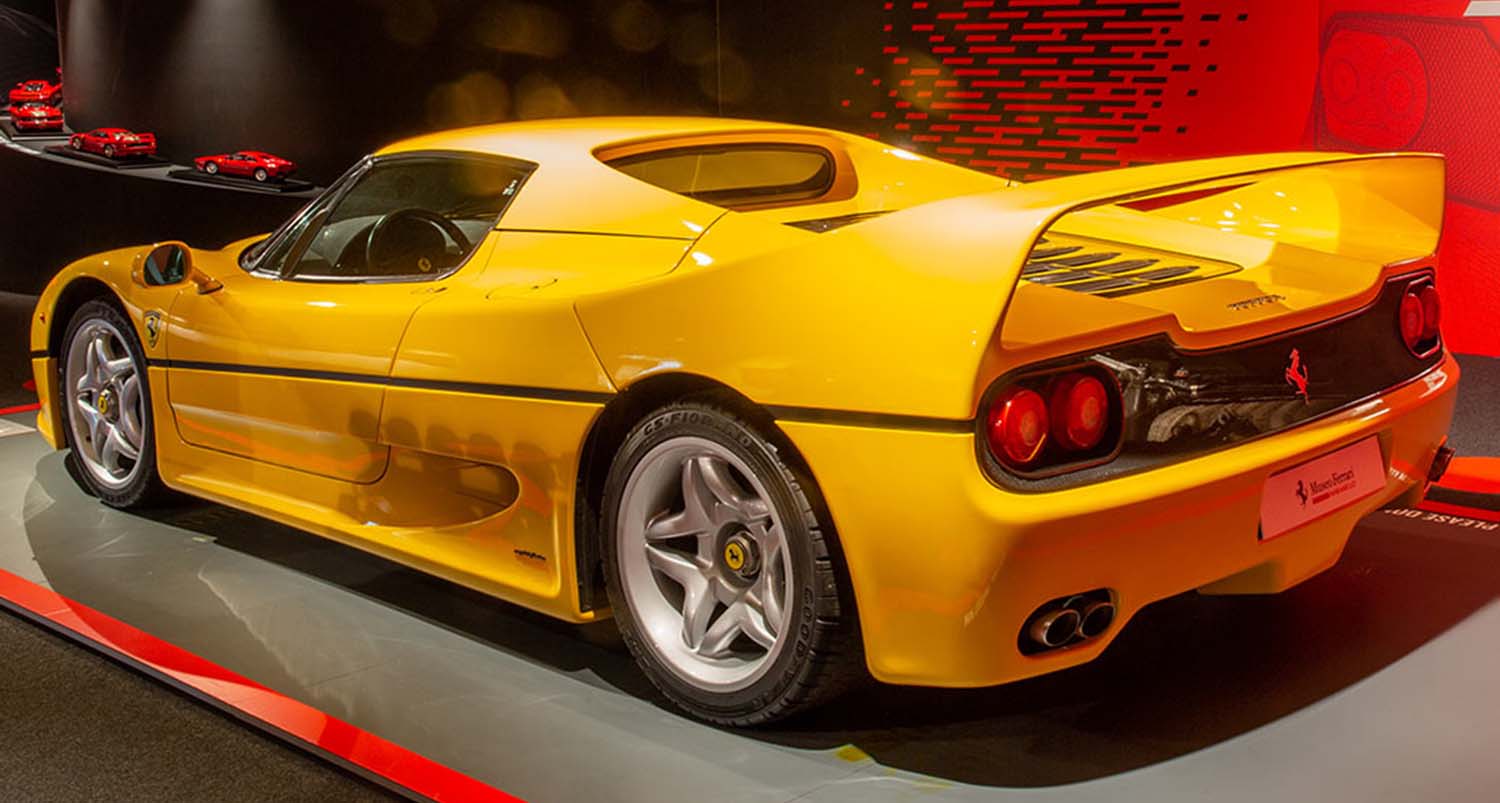
Legacy
The Ferrari F50 has left an indelible mark on automotive history, standing as a testament to Ferrari’s unwavering commitment to excellence and innovation. Its combination of race-bred technology, breathtaking performance, and timeless design ensures its place as one of the most iconic and revered supercars ever created.
Specifications:
- Engine: 4.7-liter naturally aspirated V12
- Power: Approximately 513 horsepower at 8,000 rpm
- Torque: Approximately 347 lb-ft (471 Nm) at 6,500 rpm
- Transmission: 6-speed manual
- Chassis: Carbon fiber monocoque
- Bodywork: Carbon fiber
- Suspension: Independent double wishbones with coil springs and anti-roll bars
- Brakes: Ventilated discs with ABS
- Weight: Approximately 2,976 lbs (1,350 kg)
Performance:
- 0-60 mph (0-97 km/h): Approximately 3.7 seconds
- 0-100 mph (0-161 km/h): Approximately 7.6 seconds
- Quarter Mile: Approximately 12.0 seconds
- Top Speed: Over 200 mph (322 km/h)
- Braking Distance (60-0 mph): Approximately 105 feet (32 meters)
- Skid Pad Lateral Acceleration: Approximately 1.00 g

Price
Given its rarity, performance, and historical significance, the Ferrari F50 commands a significant price on the collector car market. Well-maintained examples typically fetch prices in the range of $2 million to $3 million USD, with exceptional examples commanding even higher premiums at auctions.

